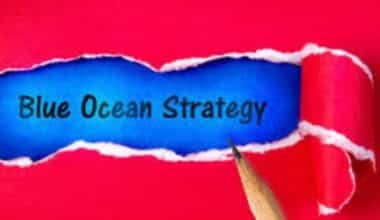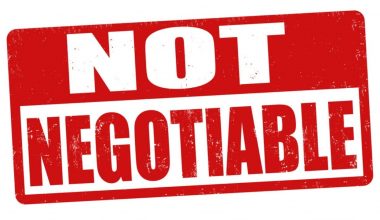Diversity has become a popular word. On the other hand, organizations that only see diversity as a trend miss out on the depth and meaning that an actual diverse and open organization delivers. Organizations with a diverse workforce are intrinsically healthier, have greater output, and are more competitive in their respective industries. However, this article will explain Diversity in the Workplace, why it is important, its example, and Diversity in the Workplace Training.
Diversity in the Workplace
Most people know what equality and diversity mean in a general sense, but what do these terms mean in the workplace? Simply put diversity in the workplace refers to the hiring of a varied range of people by a corporation. People often think that diversity only has to do with different cultures, but it also has to do with differences in gender, race, ethnicity, age, sexuality, language, schooling, background, and so on.
But in 2019, diversity in the workplace means more than just hiring people from different backgrounds. It also means making sure that all workers have the same amount of work to do. Since a study from the University of Michigan found that people hired for “diversity purposes” were sometimes seen as less qualified, more and more companies are realizing that it’s not enough to just hire people from different backgrounds for the sake of diversity.
In recent years, the discussion of workplace diversity and inclusion has expanded to ensure that corporations boost the involvement, performance, and compensation of minorities, rather than just make symbolic hiring “tick a box. Furthermore, businesses have learned how critical it is to hire a diverse spectrum of people with diverse skills.
Example of Diversity in the Workplace
When it comes to diversity in the workplace, there are hundreds of thousands of different situations that could be used as examples. Here are some of the most common examples of diversity that you can use in your workplace.
#1. A Diverse Business Team Including Individuals From Diverse Cultures
In this example of diversity in the workplace, people from the US, Japan, India, Egypt, Russia, South Africa, and other places can work for international companies. When everyone from different places works together, they bring beliefs, experiences, and cultural backgrounds that no one else has. This helps solve problems and boost productivity.
But this example isn’t just for big companies! Additionally, a company that exclusively conducts business in one country could create a diverse group by recruiting individuals from various parts of the nation or from multiple ethnic groups.
#2. A Company Makes an Effort to Draw More Diversity to Its Administration Staff.
Over the past ten years, white men have held more than 96% of administrative positions at the Fortune 500. Even if these numbers drop to about 86% by 2020, this one gender or group of people will still hold almost all management positions. So, modern organizations are now making an effort to make their administrative staff more varied by actively hiring people with different genders, races, sexual orientations, or any other trait that isn’t the commanding one.
#3. Seeking Out New Hires
Recruiting new employees in a diverse setting is a subset of workplace diversity. Also, technology has made online communication and collaboration at work easier than ever before. This makes it easier than ever to add variety to the workplace by hiring people from different places. Also, many companies can bring in the innovative ideas and experiences of people from other areas without the natural limits of commuting that were present in the working world before digital technology.
#4. An Organization Emphasizing Individuals With Unique or Different Backgrounds
Another example of workplace diversity is when a company hires people from diverse backgrounds. For instance, different companies might have a diversity training program where they try to hire disabled people or retired military leaders. Companies that hire people who just got out of jail are another example of this.
#5. Putting Together a Workforce With Age or Generational Differences
Putting together a business team with people of different ages or from different generations shows that the workplace is diverse. When it comes to the generations or ages of their employees, many companies choose one of two paths. Startups and tech-driven businesses may tend to focus on the cutting-edge skills and energy of young people. On the other hand, businesses that have been around for a while may like the skills and information that long-term employees bring to the table.
But a company or team with people of different ages and from different generations has a huge range of work skills, life experiences, and creative/problem-solving skills to offer the business. Aside from this, diversity in the workplace is never limited to the people who already work for your company. Diversity in the workplace can be helped by actively looking for suppliers, collaborators, customers, and buyers from marginalized parts of society.
Also, there are many companies, trade groups, publications, and other projects that support diversity in the workplace. Along the same lines, another way that every group shows diversity is by actively hiring people from underrepresented parts of society for everything from internships to new jobs.
Read Also: Cultural Diversity in the Workplace: Guide on How to Develop It
Why Is Diversity in the Workplace Important
Diversity in the workplace can give you access to a larger pool of talented people, help you better understand what your customers need and want, and help you make more money. Diversity can help a business in many ways, whether it’s by creating a prototype, interviewing job applicants, or running a social media campaign. It can help a company be more creative and innovative, find and keep good employees, and build a name for itself as a caring business. Let’s see why diversity in the workplace is important.
#1. Access to More Talent
When you limit the people you can hire on purpose or by accident, you cut yourself off from bright people who could work for you. By embracing diversity in the workplace, you can look for new ways to reach new groups and find skilled applicants. If your company has a reputation for being open to different kinds of people, it will naturally attract more diverse applicants. Also, a business culture that values diversity will help keep employees from leaving in the first place, so you can focus on hiring for growth instead of replacing people who quit.
#2. Enhanced Understanding of Customers and Their Needs
If you encourage diversity in the workplace, you may end up with a more diverse group of customers. This is because customers look for companies that really understand their problems and meet their needs. With this insight, the company will be able to build and promote products and services that are more inclusive, inventive, and targeted to the company’s varied client base. In other words, having different kinds of people in the workplace can give a business an edge in the market.
#3. Increased Profit
Diversity is often brought up in the context of doing what’s best for your workers and your company’s culture. But a 2017 McKinsey study found that when it comes to diversity, doing the right thing for your company culture is also the right thing for your bottom line. Companies with the best scores for gender diversity were 21% more likely to make more money than normal.
#4. Better Productivity, Creativity, and Innovation
A workplace that encourages diversity brings together many different ideas and points of view, which sparks creativity and innovation. During a brainstorming session, a group of different people can point out details and ideas that each person might not have seen on their own. This helps the team solve problems together by building on each other’s ideas in interesting and new ways. The more diverse the workforce, the more dynamic and powerful these brainstorming meetings become, leading to solutions that are more creative, inclusive, and effective.
In 2018, the Boston Consulting Group did a study that found that companies with “above-average diversity on their management teams” made 19% more money from new ideas. For these top companies, 45 percent of their total income came from new products, while only 26 percent came from new products for companies with below-average diversity.
#5. Boosted Employee Engagement
It makes sense that people might work harder if they feel welcome and respected at work. It’s not just common sense, though. A Changeboard study found that employees who worked for a company with a diverse C-suite were 57% better at working with other employees.
#6. Lower Turnover Rate
People leave a company and look for work somewhere else if they don’t feel welcome there. But when there is diversity at work, workers say they are 19% more likely to remain in their current job. By making your workplace more diverse, you can help create a society where individuals can see themselves prospering and growing for years.
#7. Improved Company Culture
A company’s shared mission and values are a rough definition of its culture. The way people work together in teams is another way to describe a company’s culture. Without variety, it’s easy for your company’s culture to leave some people out, even if the people in charge don’t know why. When you hire people from different backgrounds, your workplace will easily become a place where everyone feels welcome.
#8. Positive Brand Reputation
The impact of workplace diversity on a company’s reputation as a brand can be significant. By embracing diversity, a business can show its commitment to inclusion, equality, and social responsibility, which may connect with customers, employees, and other stakeholders.
Read Also: GENDER DIVERSITY: How to Improve Gender Diversity in the Workplace
Diversity in the Workplace Training
Diversity in the workplace training is professional training that aims to give people the skills they need to work with and get along with people from different cultures. A diversity training program tries to make people more aware of the different kinds of diversity and more appreciative of the differences between coworkers. It also teaches people how to improve their interpersonal and communication skills across diversity, which helps create a good work environment. At the company level, diversity training helps stop civil rights violations, makes it easier for different identity groups to be included, improves teamwork, and makes the workplace a more welcoming place for everyone.
Cocchiara, Connerley, and Bell (2010) say that companies need to give their employees diversity training for a number of reasons, including the following:
- To attract talent while increasing earnings for organizations.
- To follow the moral and legal rules of the organization.
- To maximize organizational diversity, build leadership and vital skills.
- To spread information about organizational policies and problems related to diversity.
- To improve leadership growth and the effectiveness of management.
Read Also: DIVERSITY AND INCLUSION: Why Are They Important in the Workplace?
What Do You Mean by Diversity?
It’s the state of having different things. It is described as a situation with several different parts. It is the number of different kinds of living things in a certain environment.
What Are the 4 Characteristics of Workplace Diversity?
There are different segment marks that add to the variety. Age, sexual preference, identity, and education are the ones that people think about the most. A full description of these traits helps people understand what it means to have variety at work.
What Is the Best Way to Explain Diversity?
Diversity is when you actively include people who are different from you. This is more than just being aware of or accepting differences. Diversity means using the things that make us different to make the whole group better.
What Are the Benefits to Employees of a Diverse Workplace?
One of the most important benefits of diversity at work is that workers often feel more comfortable and happy in environments that are welcoming to everyone. They are also more likely to stay with a company longer if they feel like their unique talents are valued and appreciated.
How Do You Manage Diversity in the Workplace?
6 ways to deal with differences in the workplace
- Include diversity in your approach when you choose who to hire.
- Manage diversity with the help of the individuals in charge.
- Consider all groups.
- Participate in diversity training.
- Set up policies that help people from diverse backgrounds.
- Strategies for workplace diversity that are adaptable.
How Does Diversity Strengthen a Team?
If everyone on a team was the same, they wouldn’t be able to come up with new and different ideas. This is because choices made from different points of view are often better. Also, diversity makes it easier for people to say what they think. In turn, this makes the team atmosphere more productive.





